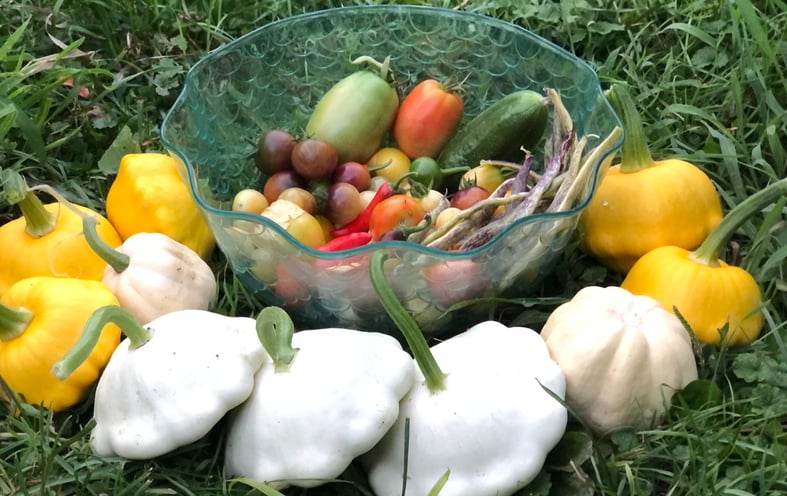A Seasonal Guide to Growing Food in Your Home Garden
An easy to follow list of common vegetables, fruits, and flowers grown in a home garden.
1/27/20252 min read


Home gardening is a rewarding experience, whether you’re growing fresh produce for your family or just enjoying the therapeutic process of nurturing plants. To help you plan your garden, here's a general seasonal guide for a northern home garden. This guide is based on growing conditions in Northeast Ohio.
Spring Planting
Spring is a time of renewal, and your garden is no exception. The soil warms up, making it perfect for planting cool-weather crops.
Vegetables:
Lettuce
Spinach
Kale
Radishes
Peas
Broccoli
Cauliflower
Carrots
Beets
Herbs:
Parsley
Cilantro
Dill
Chives
Fruits:
Strawberries
Rhubarb (a perennial often planted earlier or the year before)
Fun Idea: Create a "salad garden" by planting a mix of lettuce, spinach, and radishes in a small raised bed or containers. Add edible flowers like nasturtiums for a pop of color and flavor.
Summer Planting
With longer days and warmer temperatures, summer is ideal for heat-loving plants.
Vegetables:
Tomatoes
Peppers (bell, hot, and sweet varieties)
Cucumbers
Zucchini
Squash
Eggplant
Corn
Green beans
Herbs:
Basil
Oregano
Thyme
Rosemary
Mint (best kept in containers to prevent spreading)
Fruits:
Melons (watermelon, cantaloupe)
Blueberries (if established earlier)
Blackberries
Raspberries
Fun Idea: Try companion planting by growing basil next to your tomatoes. Not only does it enhance tomato flavor, but it also helps deter pests like aphids.
Fall Planting
As summer winds down, the cooler weather provides an opportunity for another round of planting, especially for quick-growing or cold-tolerant crops.
Vegetables:
Spinach
Kale
Swiss chard
Turnips
Radishes
Garlic (plant in fall for a summer harvest the following year)
Onions (sets or seeds)
Herbs:
Sage
Tarragon
Mint (bring indoors or protect outdoors)
Fun Idea: Use row covers or a small cold frame to extend your growing season into winter, especially for greens like spinach and kale.
Annual Flowers for Pollinators
Adding flowers to your garden not only enhances its beauty but also attracts pollinators like bees, butterflies, and hummingbirds, which are essential for many crops.
Popular Choices:
Sunflowers
Zinnias
Cosmos
Marigolds
Calendula
Snapdragons
Petunias
Alyssum
Fun Idea: Create a dedicated pollinator-friendly flower bed or intersperse these flowers among your vegetables. Consider planting a mix of heights and colors to provide shelter and food for various pollinators.
Year-Round Gardening Fun
Experiment with Vertical Gardening: Maximize space by growing vining plants like cucumbers and beans on trellises or using wall-mounted planters for herbs.
Plant a Pollinator Garden: Include flowers like marigolds, sunflowers, and lavender to attract bees and butterflies, which help pollinate your crops.
Grow Uncommon Varieties: Try purple carrots, yellow cucumbers, or heirloom tomatoes for a unique twist on classic garden staples.
Start a Compost Bin: Recycle kitchen scraps and garden waste into nutrient-rich compost to feed your soil.
With careful planning and a little creativity, you can enjoy fresh, homegrown food throughout the year. Whether you’re planting strawberries in spring, tomatoes in summer, or garlic in fall, every season brings its own delights to the home garden. Happy planting!
